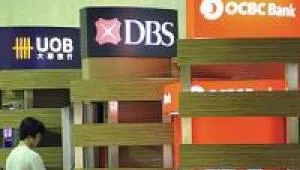
See exactly how rising interest rates will affect Singapore bank earnings
Maybank's sensitivity analysis reveals startling impact.
Maybank Kim Eng conducted a sensitivity analysis following the increasing chances of the US Federal Reserve tapering its quantitative easing programme. The tapering is expected to push up interest and consequently affect Singapore banks' net interest margin (NIM), asset quality and loan growth.
The report showed that among the three, Singapore banks will be most sensitive to NIM changes with a 5bps increase in NIM resulting in a 4% on average increase in FY14F-15F EPS.
"The earnings uplift is significant after the past few years of depressed NIMs. We believe DBS would benefit the most compared to its peers, given its strong deposit franchise," said Maybank.
Here's the complete report from Maybank:
Higher interest rate has its good and bad. With the odds of the US Federal Reserve tapering its quantitative easing programme on the rise, interest rates are set to rise. The implications will manifest in banks’ net interest margin (NIM), asset quality and loan growth. In this report, we conduct a sensitivity analysis on earnings assuming a 1ppt change in loan growth, a 5bps rise in NIM and a 5bps increase in credit charge (as a proportion of net loans).
Most sensitive to NIM changes but less so to loan growth. Based on our estimates, every 5bps increase in NIM will raise FY14F-15F EPS of our universe by 4% on average. The earnings uplift is significant after the past few years of depressed NIMs. We believe DBS would benefit the most compared to its peers, given its strong deposit franchise. However, we would add that banks’ earnings are much less sensitive to a change in loan growth in the year the loans are disbursed because the additional interest income earned or lost will substantially be offset or cushioned by additional or lower collective impairment to be set aside as required by the regulators.
What about a 5bps increase in credit charge? The earnings impact ranges from 2.5% to 3.1%, with a slight variation from bank to bank. As a proportion of average net loans, our universe set aside an average credit charge-off of 24bps in 2012, the lowest since 2006. We expect credit charge-off to rise to 27bps in 2013 and 30bps in 2014, before improving to 28bps in 2015.
DBS is our top sector pick. Of the three Singapore banks under our coverage, we believe DBS is best positioned to take advantage of a rising interest rate environment, given its liquid balance sheet and strong deposit franchise with cheap funds accounting for 58.4% of total deposits. We have a BUY call on DBS with SGD19.70 TP, based on 14x FY14F core EPS, a slight premium to its rolling PER average since 2005.
Assessing the earnings impact for every 5bps increase in NIM. We expect a moderate increase in rates with 3M Singapore dollar SIBOR rising to 1.0% by end-2015 and 2.0% by end-2016 (currently 0.4%). Banks have suffered several years of persistent compression in NIM due to the depressed interest rate environment. Based on our estimates, banks, in particular DBS, are very sensitive to changes in NIM. Every 5bps increase in NIM would lift EPS by 4% on average.
Assessing the earnings impact for every 5bps increase in credit cost. For every 5bps increase in credit cost, the impact on earnings ranges from 2.5% to 3.1%, with a slight variation from bank to bank. We expect credit charge-off to rise to 27bps in 2013 and 30bps in 2014, before improving to 28bps in 2015. Higher interest rate could affect the quality of bank assets.
However, asset quality is more likely to stay resilient and a significant slippage appears remote at this juncture. Our view is premised on the decent household and corporate balance sheets, as well as reasonably strong economic growth.
Assessing the earnings impact for every 1ppt change in loan growth. We estimate negligible earnings impact for every 1ppt change in loan growth. Banks’ earnings are much less sensitive to loan growth in the year the loans are disbursed.
For example, a 1ppt increase in loan growth (vs our forecast) will translate into higher interest income earned which will substantially be offset by the quantum of collective impairment to be set aside as required by the regulators. On the flip side, a 1ppt decrease in loan growth (vs our forecast) will see the lower interest income earned being cushioned by a smaller collective impairment being set aside. Under MAS Notice 612, banks have to set aside a minimum 1% of on- and off-balance sheet credit exposures (adjusted for collaterals held).




![Lorem Ipsum [ABF 1]](https://cmg-qa.s3.ap-southeast-1.amazonaws.com/s3fs-public/styles/exclusive_featured_article/public/2025-03/a_hand_pointing_to_a_futuristic_technology_5b87c9d0e3_1.png.webp?itok=2w0y1WhS)


![Cross Domain [Manu + SBR + ABF + ABR + FMCG + HBR + ]](https://cmg-qa.s3.ap-southeast-1.amazonaws.com/s3fs-public/styles/exclusive_featured_article/public/2025-01/earth-3537401_1920_4.jpg.webp?itok=WaRpTJwE)







 Advertise
Advertise

